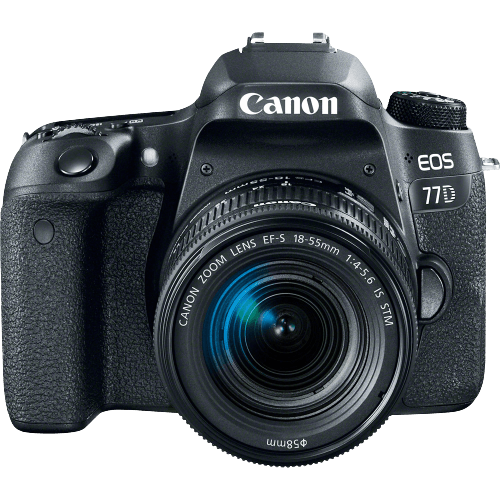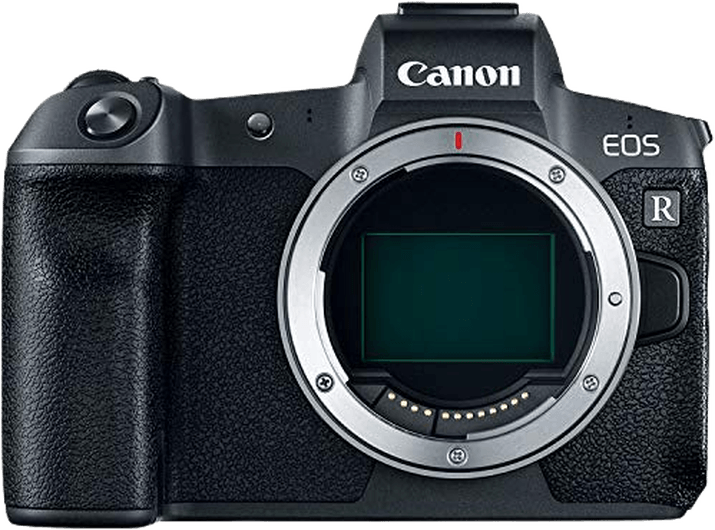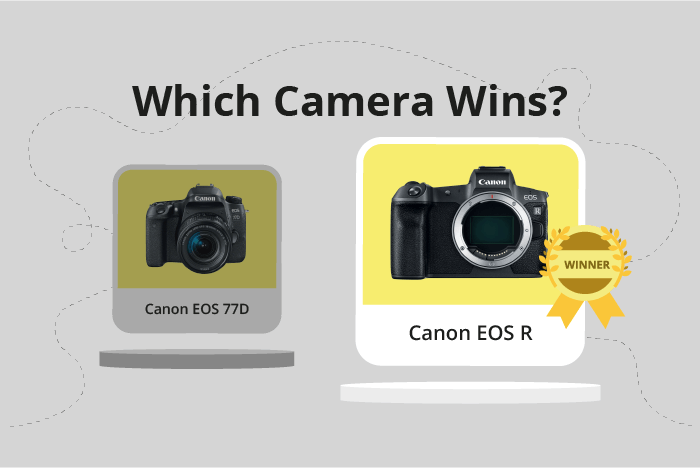Canon EOS 77D vs EOS R Comparison
Canon EOS 77D

Canon EOS R

The Canon EOS R outperforms the Canon EOS 77D with a score of 74/100, while the EOS 77D scores 63/100. Both cameras share similar specifications, such as being released in 2017 and 2018 respectively, and having a launch price of $900 for the 77D and $2300 for the EOS R.
The EOS R excels with its mirrorless design, making it lighter at 485g (1.07lbs) compared to the 77D’s 765g (1.69lbs). Additionally, the EOS R’s camera size is 136 x 98 x 84mm, slightly larger than the 77D’s dimensions of 131 x 100 x 76mm.
On the other hand, the EOS 77D has the advantage of a lower price point, making it more accessible for budget-conscious photographers. However, the EOS R’s superior performance and lighter weight make it a better choice for those willing to invest in a higher-quality camera. Ultimately, the decision between the two cameras depends on individual preferences and budget constraints.
Canon EOS 77D vs EOS R Overview and Optics
The Canon EOS R outperforms the Canon EOS 77D in optics with a score of 73/100, a 9-point difference compared to the 77D’s score of 64/100. Both cameras share some common specifications, such as having a CMOS sensor, no image stabilization, and similar shooting speeds (6 fps for the 77D and 8 fps for the EOS R).
The EOS R excels in several aspects, including a higher megapixel count of 30.3 compared to the 77D’s 24.2 megapixels. This results in more detailed images and better resolution. Additionally, the EOS R has a more advanced processor, the Digic 8, which contributes to faster processing and better image quality. Moreover, the EOS R has a higher DXOMARK score of 89 for its sensor, indicating improved overall performance. Another advantage of the EOS R is its full-frame sensor, which provides better low-light performance and a wider dynamic range. Lastly, the EOS R has the Canon RF lens mount, which offers compatibility with a new range of lenses designed for mirrorless cameras.
On the other hand, the 77D has the Canon EF-S lens mount, which makes it compatible with a vast selection of existing Canon lenses. However, this does not necessarily make it better in terms of optics, as the EOS R can also use these lenses with an adapter.
To conclude, the Canon EOS R surpasses the Canon EOS 77D in optics with a higher score, more megapixels, a better processor, a superior sensor, and a more advanced lens mount. While the 77D is compatible with many Canon lenses, this aspect does not outweigh the advantages offered by the EOS R. Therefore, the EOS R is the better choice for those seeking superior optical performance.
Canon EOS 77D vs EOS R Video Performance
The Canon EOS 77D and Canon EOS R both have a video score of 70/100, indicating that they offer comparable video performance. Both cameras share some common features, such as built-in time-lapse functionality. However, there are specific differences in their video capabilities that make one camera more suitable for specific users.
The Canon EOS R has a higher maximum video resolution of 4K, compared to the Canon EOS 77D’s Full HD resolution. This means that the EOS R can capture videos with larger dimensions of 3840 x 2160, providing more detail and better image quality. The higher resolution makes the EOS R a better choice for those who require superior video quality, such as professional videographers or filmmakers.
On the other hand, the Canon EOS 77D has a higher maximum video frame rate of 60fps, whereas the EOS R can only shoot at a maximum of 30fps. This advantage allows the EOS 77D to capture smoother video footage, especially in fast-paced situations or when recording action scenes. This feature is particularly beneficial for sports videographers or those who need to record fast-moving subjects.
Although the Canon EOS R offers better video resolution, the Canon EOS 77D provides smoother video footage due to its higher frame rate. The choice between these two cameras depends on the specific needs of the user. For those who prioritize video quality and detail, the EOS R is the better option. However, if capturing smooth and fast-paced video footage is more important, the EOS 77D is the more suitable choice.
Canon EOS 77D vs EOS R Features and Benefits
The Canon EOS R outperforms the Canon EOS 77D with a feature score of 87/100 compared to 70/100. Both cameras share several specifications, including a touchscreen, flip screen, WiFi, and Bluetooth capabilities. However, neither camera offers GPS functionality.
The EOS R excels with a larger screen size of 3.2 inches compared to the 77D’s 3-inch screen. Additionally, the EOS R boasts a significantly higher screen resolution of 2,100,000 dots, while the 77D has a resolution of 1,040,000 dots. These differences contribute to the EOS R’s superior score and overall better performance in terms of features.
Despite its lower score, the EOS 77D still offers some advantages. Its smaller screen size and lower resolution result in a more compact and lightweight design, making it easier to carry and handle during photography sessions. This may be a valuable consideration for photographers who prioritize portability and ease of use.
When comparing the Canon EOS 77D and EOS R, the EOS R emerges as the better camera in terms of features due to its larger screen size and higher screen resolution. However, the EOS 77D remains a viable option for those who value a more compact and lightweight design. Ultimately, the choice between these two cameras will depend on individual preferences and photography needs.
Canon EOS 77D vs EOS R Storage and Battery
The Canon EOS R outperforms the Canon EOS 77D in storage and battery with a score of 35/100 compared to the 77D’s 29/100. Both cameras share a single memory card slot, however, the EOS R accepts SD/SDHC/SDXC (UHS-II compatible) memory cards, providing faster read and write speeds than the 77D’s UHS-I compatible cards.
The EOS R also offers USB charging, making it more convenient for on-the-go photographers. On the other hand, the EOS 77D has a longer battery life of 600 shots compared to the EOS R’s 370 shots, using its LP-E17 battery type. This advantage is valuable for situations where charging options are limited.
Despite the EOS 77D’s longer battery life, the EOS R’s faster memory card compatibility and USB charging capability make it the better choice for storage and battery performance.
Canon EOS 77D vs EOS R – Our Verdict
Are you still undecided about which camera is right for you? Have a look at these popular comparisons that feature the Canon EOS 77D or the Canon EOS R:

